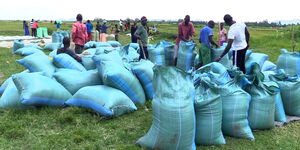The question on how to best develop a piece of land in order to gain maximum benefits has always attracted mixed explanations from experts.
Land experts note that in as much as consumer preferences, housing trends, land interest rates and market value changes, certain baseline principles of development remain constant and these form successful land projects or designs.
These principles can be exploited whether one develops in Nairobi, its suburbs or environs. It’s worth noting that land developers indicated a slight growth in land prices in some areas and a drop in others. However, the number of investors in the last two quarters of 2021 rose.
Financial firm EFG Hermes, in its recent Macro Strategy Report, indicated that land property prices in Nairobi and its environs dropped by up to 27 per cent.
“Prices in the high-end market segment, upper-middle and satellite towns are significantly lower in the first quarter of 2021 compared to the past four years. The property market in the country is overvalued. The pandemic has seen distressed properties sell for less than their initial valuation,” EFG stated.
The firm noted that Parklands, Runda, Upper Hill and Westland’s prices are lower as compared to their value in the past four years.
Hass Consult in its quarter two (Q2) report dated August 2021, noted a minimal rise in land prices, but still lower than the past years. Land prices within Nairobi improved by a mild 0.3 per cent in the quarter while Nairobi’s satellite towns recorded a 1.1 per cent increase over the same period.
Nyari and Ngong estates registered 2.25 per cent and 18.13 per cent hikes respectively due to the construction of new highways. An acre in Ngong sells at an average of Ksh25.4 million
Kiambu County areas such as Ruiru and Kamakis were considered rivals to Ngong. In Ruiru, Hass Consult stated that an acre trades at an average of Ksh24,900,000. Others are Ongata Rongai and Kiserian where an acre trades at Ksh24.8 million and Ksh8.3 million respectively.
“Select areas within the suburbs and towns, are being favoured by proximity and these places opening up, which in turn is attracting developer and speculator interest and thereby improving asking prices,” noted Sakina Hassanali, Head of Development Consulting and Research at Hass Consult based in Nairobi.
Moses Muriithi, CEO at Fanaka Real Estate, added that Kenyans should also look for market leaders and most preferred land selling companies while buying land in such areas to avoid being duped.
“Land within Kamakis, Ruai and Ruiru as a whole is in high demand with investors flocking the area. Most developers are looking for plots and houses outside the city and such areas suit their preferences. A good developer should strive to ensure that they offer affordable land in such areas with flexible payment plans,” the CEO noted.
Raw land development is the process of purchasing a parcel of land with the intent of either developing and building on it or holding onto it for long-term appreciation. To successfully develop such areas investors are urged to retain basic land development fundamentals which include:
Master Engineering Adjustments
This encompasses the feasibility of the plan and construction of infrastructure (sewer, water, transportation, storm sewer, gas, electric, telephone and fibre) and earthwork (grading). These are also offered by the best land developers and civil engineers.
Land experts advise that staying put with a rigid plan is catastrophic as a good plan on paper may still have flaws on the ground. Tweaking and revising these plans is cost-saving and offers a high return on investment avenues.
Tour the land
Having the best real estate agents and land developers to tour with the land allows one to visualise the development designs, eliminate and anticipate challenges too. Also enables one to design a development that suits the land’s natural shape and form.
Utilising the space
An efficient design contains wasted space and saves on land. Intersections consume much space that could be used for development. They also increase costs if not carefully fixed into a plan.
Developers should also incorporate storm water management. This is reducing the runoff of rainwater into the streets. Experts advise that it is better to have rainwater absorbed into the soil or saved rather than flowing into the streets causing soil erosion and carrying along with it debris and other pollutants.
Design from the outside in
Developers are encouraged to start by building homes first then back yards and property boundaries to front yards. This then allows one to plan how to manage storm water and grading.
Experts argue that one of the common and costly mistakes made is beginning construction is street design. Streets should be saved for last. Street space should also be reduced and more acres accorded to green space and home lawns as home buyers are seeking areas with large affordable spaces.
Zoning
Zoning codes determine what types of properties - whether single-family, multifamily, condominium, or commercial - can be built on a plot. As an investor, this could ultimately hinder your investment approach. When getting started in raw land investing, it’s vitally important to understand the area’s zoning laws.
Several cases have been highlighted where residents sue developers for breaking such laws like building commercial houses in residential homes.
Hierarchy of Importance
When planning your design it’s vital to develop and implement a hierarchy of importance. Elements of your design that are the most important should be focused on first.
"When developing an office building the distance from major roadways may be important for limiting road noise within the building. Positioning of the structured parking garage may be important for ensuring tenants and visitors can easily access the building during rush hour."
"For industrial distribution buildings, the ingress and egress of trucks for shipping and receiving may dictate the position and orientation of the building. For homes, access to major roads and parking spaces in the residential is key," experts advise.












